From Pyongyang to Tehran: How the Korean Blueprint Became a Narrative of Genocide
How a Forgotten War Became the Blueprint for Global Proxy Jihad
Ask most people about the Korean War, and you’ll get silence—or confusion. Wasn’t that Vietnam? Just a “police action”? Didn’t it end? It wasn’t. It never ended.
After Japan’s defeat in WWII, Korea was split at the 38th parallel—with Soviet forces occupying the North and American forces the South. This was never meant to be permanent. The Allies had agreed to temporarily divide the peninsula to disarm Japanese troops and stabilize the region. But instead of reunifying, two rival governments emerged—each claiming to be the sole legitimate ruler of all Korea.
In the North, the Soviets installed Kim Il-Sung, a Moscow-trained communist guerrilla. In the South, Syngman Rhee, a staunch anti-communist backed by the U.S., rose to power. By 1948, two Koreas were born—both armed, both determined to unify the peninsula by force.


On June 25, 1950—seventy-five years ago today—North Korean troops crossed the 38th parallel in a surprise invasion of South Korea, launching what would become the first major military conflict of the Cold War. Entire cities fell within days. Families were torn apart. The fragile peace that followed World War II was shattered. In response, the United Nations Security Council—boycotted at the time by the Soviet Union—swiftly passed Resolution 83, calling for member states to assist South Korea. Within days, a U.S.-led UN coalition was formed, marking the first time the United Nations authorized a collective military action under its flag.

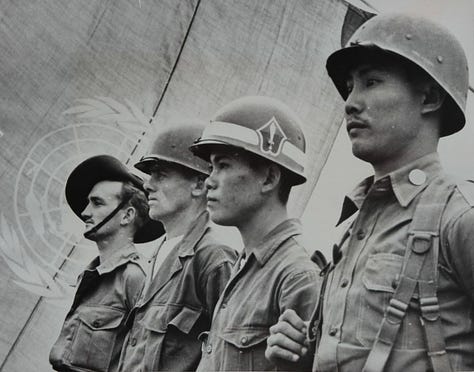
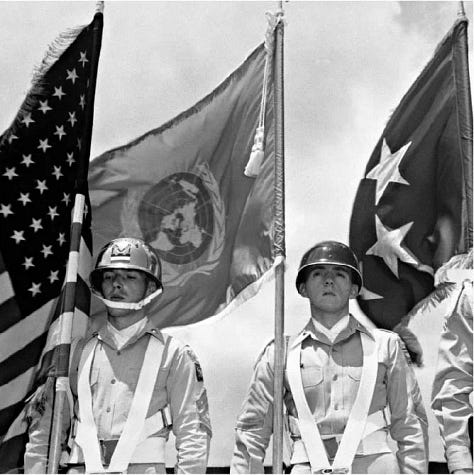
The Korean War killed over three million in three years. By war’s end, over five million Koreans had become refugees. Families were shattered, villages wiped off the map. But the war also drew in superpowers, forged alliances, destroyed nations—and ended with no winner. It was the first major conflict of the nuclear age—and the blueprint for every proxy war that followed.

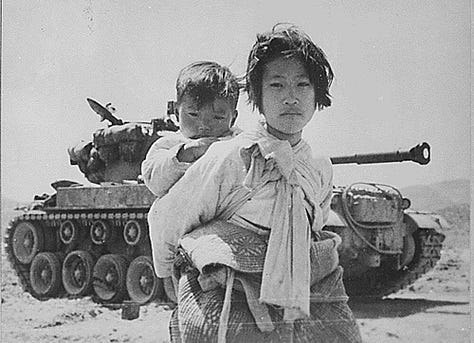
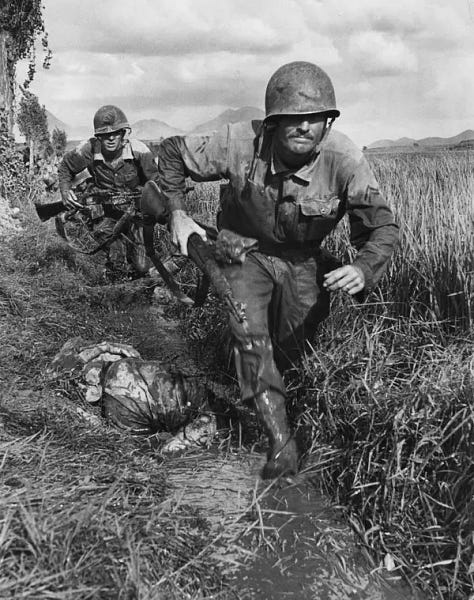
North Korea was backed by Moscow and Beijing. South Korea supported by Washington. When the North nearly conquered the entire peninsula, U.S. forces turned the tide. But when American troops pushed too far north, hundreds of thousands of Chinese “volunteers” crossed the Yalu River, dragging the war into a grinding stalemate. The superpowers used smaller nations as battlegrounds—without ever fighting each other directly. It set the precedent for Cold War conflict.
The war didn’t just kill soldiers—it obliterated civilians. Cities like Seoul changed hands four times. Refugees were caught in the crossfire—starved, bombed, executed—often deliberately.
Fighters embedded themselves in refugee columns, schools, and hospitals. Evacuation routes were mined—not to stop tanks, but to trap fleeing civilians. Every noncombatant became a weapon or a liability. The Korean War was the first major modern war where the systematic use of human shields was deliberately integrated into the war strategy.
U.S. and South Korean forces faced impossible choices: fire and risk killing innocents, or hold fire and risk ambush and die. Entire towns were leveled to root out guerrilla fighters. Their deaths became propaganda. The war wasn’t just fought with bombs and bullets—it was fought with stories.
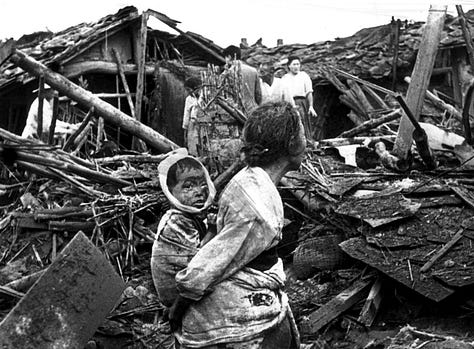
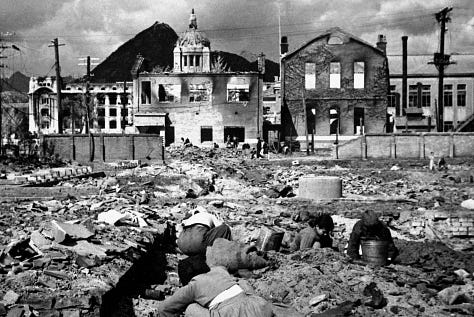
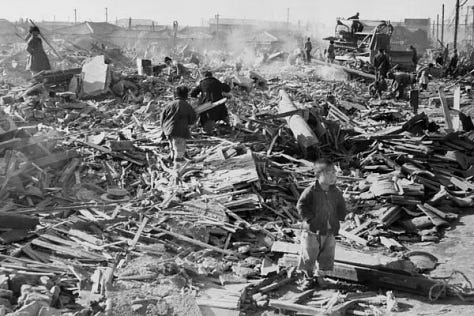
North Korea and China weaponized narrative. They framed the war as heroic resistance against American imperialism. U.S. troops were cast as invaders. Airstrikes became massacres. Every Northern advance was “liberation.”
This wasn’t just spin. It was psychological warfare—broadcast through radio, leaflets, education, and diplomacy. Chinese and North Korean officials flooded the global stage with claims of war crimes and colonial aggression. Prisoners of war were paraded on film, “confessing” to atrocities after torture. The goal? Demoralize American audiences and sway world opinion.
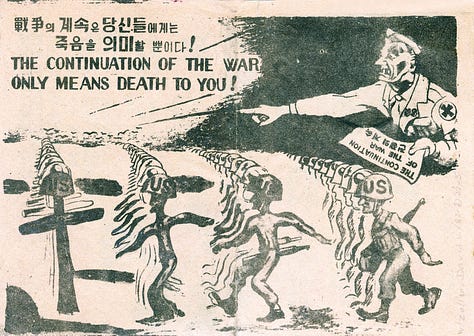
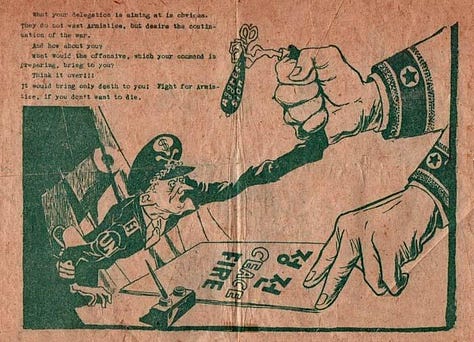

At the UN and other international forums, China and North Korea used staged testimonies and flooding of accusations at international forums as part of their propaganda strategy, which Western media, driven by skepticism and appetite for scandal, often amplified. This interplay helped shift the narrative of the Korean War from a straightforward military conflict to a contested moral and ideological battleground. The propaganda meant to depicts Americans as barbaric murderers. The goal entire goal: turn a military stalemate into a moral defeat for the West.
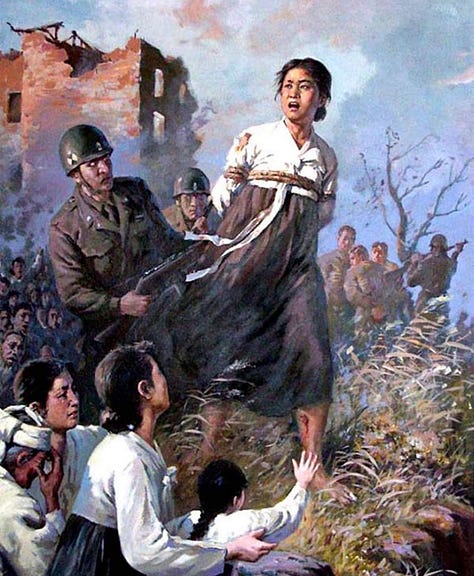
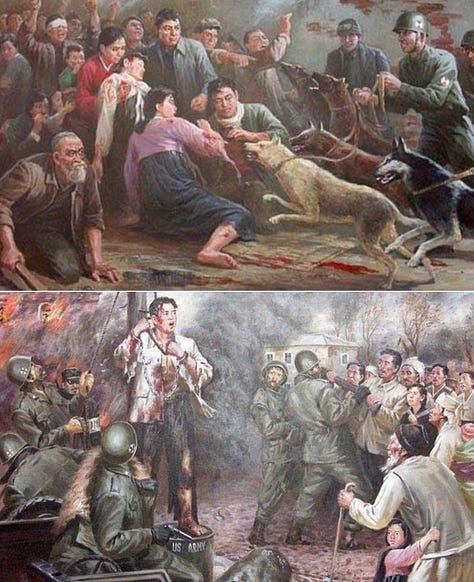
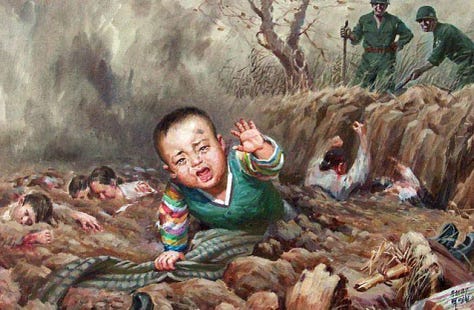
South Korean forces were not without blame. In the chaos of war, South Korean forces, often operating under immense pressure committed atrocities of their own. However, unlike the North, these were not part of a state-sanctioned doctrine or official military policy, but rather chaotic, localized abuses often driven by fear, revenge, or desperation.
By 1953, exhaustion and stalemate forced a ceasefire. No victory. No peace treaty. Instead, a new border was drawn: the Demilitarized Zone (DMZ)—a 160-mile scar across the peninsula, now the most fortified border on Earth.
Today, nearly two million troops stare each other down across the DMZ. North Korean artillery targets Seoul. U.S. and South Korean forces remain on permanent alert. Drones patrol the skies. Landmines lie in wait. Every inch is monitored. Every misstep could ignite war. It’s not peace, it is a frozen war.

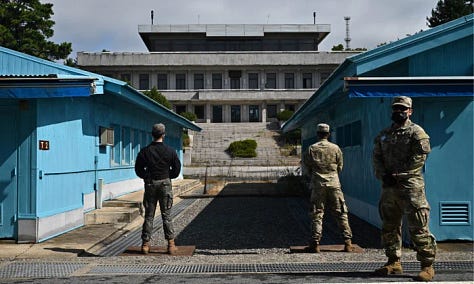

In the West, the war was ambiguous. Was it about saving South Korea? Containing communism? Confronting China? With no clear goal and no decisive end, the public moved on. The conflict lacked a clear, inspiring purpose and ended in a costly stalemate rather than a decisive victory. Overshadowed by the huge impact of World War II before it and the Vietnam War after, the war faded from public attention. And the Korean War became “The Forgotten War.”
From the ashes of that war, North Korea didn’t just survive—it mutated. While the South became a democracy, the North became a dynastic cult. It turned isolation into strategy, starvation into control, and propaganda into religion.
In North Korea, that campaign became doctrine. The U.S. was the villain. Kim Il-Sung led a glorious resistance. The war was a righteous victory. Pure fiction—but taught to every child, enshrined in every textbook. Propaganda replaced history. The lie became law. Today, that indoctrination continues. Schools don’t just teach history—they manufacture soldiers. Children are raised to worship Kim Jong Un as a living god, trained from a young age to see war as destiny and America as the eternal enemy.
The world watched—believing the regime would collapse. It didn’t. It adapted. It metastasized. While world leaders issued statements and held summits, Pyongyang built bombs—not just warheads, but missiles capable of reaching Tokyo, Seoul—even Washington. No longer a regional threat, but a global one.
Sanctions were half-hearted. Diplomacy became theater. UN officials issued condemnations. But nothing stopped the regime from crossing the one line no rogue state ever should. North Korea—a country that cannot feed its people—now possesses the most terrifying weapons on Earth. What started as a ceasefire? It became radioactive.
That unresolved war—and its brutal tactics, propaganda, and moral fog—became the blueprint for the modern conflicts we see today. Where proxy battles, psychological warfare, and civilians used as pawns were born.
Today, that blueprint is being executed again. Iran, Russia, and China have inherited and evolved the Korean War playbook.
Proxy militias. Narrative warfare. Diplomatic obstruction. All reused in a global campaign—with Israel at the center of the narrative.
Tehran arms, funds, and directs a web of terror proxies—Hezbollah in Lebanon, Hamas and Islamic Jihad in Gaza, Shiite militias in Iraq and Syria, and the Houthis in Yemen. These groups, despite having them, in the battlefield don’t wear uniforms. They embed in civilian areas. Hospitals become weapons depots. Schools become launchpads. Refugee camps become shields. They provoke war from within human cover—and cry genocide when fired upon.
Just as North Korea and China once manipulated civilian suffering to undermine Western resolve, Iran’s proxies orchestrate every strike for propaganda value. Civilian deaths are pre-loaded into the narrative. During the Korean War, atrocity propaganda were drawings, today is staged videos, makeup and AI images and videos. today we have “Pallywood.”
Western outrage becomes a weapon. At the UN, Russia and China protect this machine. Moscow vetoes resolutions against Iranian proxies. Beijing recasts the conflict as anti-colonial struggle, courting Muslim support. The result? Israel is condemned more than the groups that target civilians with rockets. Truth is flipped on its head.
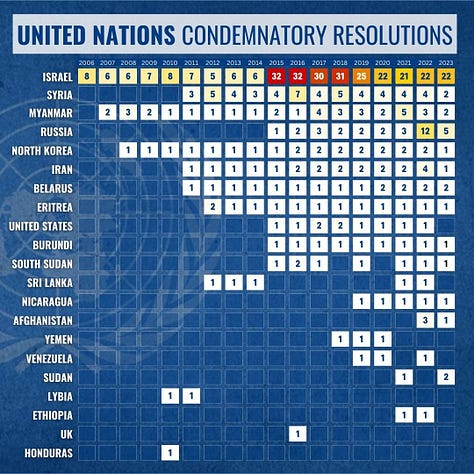
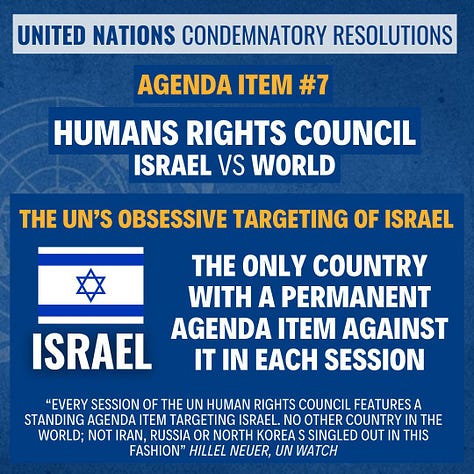

Human rights institutions have been hijacked. Terror sponsors sit on councils meant to judge them. Legal warfare replaces real justice. International law is no longer a shield for the innocent—it’s become a sword against the democratic world. Western media, still seduced by victim/oppressor tropes, echoes the script. Photos of rubble dominate coverage, but the rockets launched from schools rarely make the cut. Context vanishes. Headlines scream about body counts. The side that fires back is branded the aggressor.
None of this was spontaneous. It was engineered. In the 1960s, the KGB repackaged the Palestinian conflict into a global revolutionary cause. Arafat was their vessel—trained in Moscow, fluent in terror and media manipulation. He mentored the founders of Iran’s IRGC, trained them in Lebanese refugee camps, and laid the ideological groundwork for Tehran’s modern terror state.

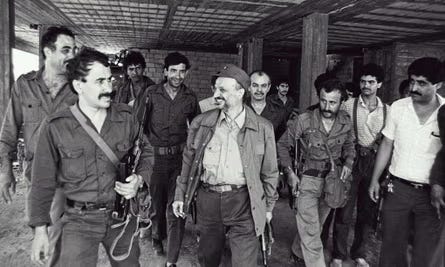
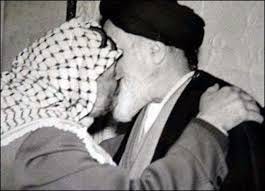
Mahmoud Abbas? A Soviet-trained operative whose doctoral thesis denied the Holocaust. Not just a politician, but a long-term KGB asset. The Palestinian narrative wasn’t organic. It was Soviet infrastructure—built to fracture the West and inflame the Arab world through Marxist propaganda, terror spectacle, and diplomatic infiltration.
And just as in Korea, the modern war in the Middle East is as much psychological as it is physical. Indoctrination is constant—from textbooks to children’s shows, martyrdom parades to school curricula. Propaganda is not an accessory to war. It is the war.
The current war against Israel isn’t a regional flare-up. It is a multi-front proxy war, coordinated by authoritarian powers, backed by decades of narrative warfare and institutional subversion. But here’s what didn’t happen: those five million Korean refugees? They were resettled. Absorbed. Integrated. Today, there are no Korean refugee camps, no permanent UN agencies built to preserve their status.
Generations of Palestinians inherit the label. Refugees are kept in limbo—not for lack of resources, but because their existence is a political tool. No other refugee population in history has been preserved and politicized. UNRWA, exists not to solve the crisis but to sustain it. Palestinian refugees, status has been frozen in time—and weaponized.
Despite Israeli strikes that obliterated Hezbollah, has nearly wiped out Hamas and in Iran, eliminated senior IRGC commanders, nuclear scientists, and missile factories—despite American destruction of nuclear sites—Iran’s nuclear program is not gone. It’s delayed, not destroyed. Iran now claims victory—not on the battlefield, but over the narrative. A triumph over “imperialists” and the “Zionist regime.” And Tehran, far from deterred, is determined to rebuild, even demanding reparations for its nuclear sites.
The UN, condemns the strikes more than the terror that provoked them. The current ceasefire? Not a resolution. A tactical pause. Iran’s proxies remain intact. Russia and China shield them diplomatically. And the West, unsure of its own moral clarity, falters—divided and defensive.
This is not about borders. It’s about whether truth still matters. Whether democracies will defend themselves against a war fought through lies, lawfare, and manipulated outrage. And now, it comes with a radioactive price tag.
Today, the world believes there is a “genocide in Gaza, ” the Islamic Republic and its proxies is defended and supported not only in the Middle East, they have cheerleaders extending to the streets of London, Paris, New York and beyond. Just like North Korea in 1953—Iran and its proxies may not be able to win militarily. That is why it is also fighting to win the story. And stories shape history.
Psychological warfare, weaponized narratives, human shields, and propaganda worked once in Korea. The only question now is—how much longer will the West continue to look away and allow history to repeat itself and once again turn nuclear and trying to stop it radioactive?






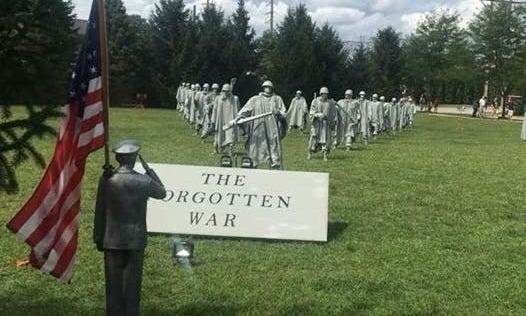
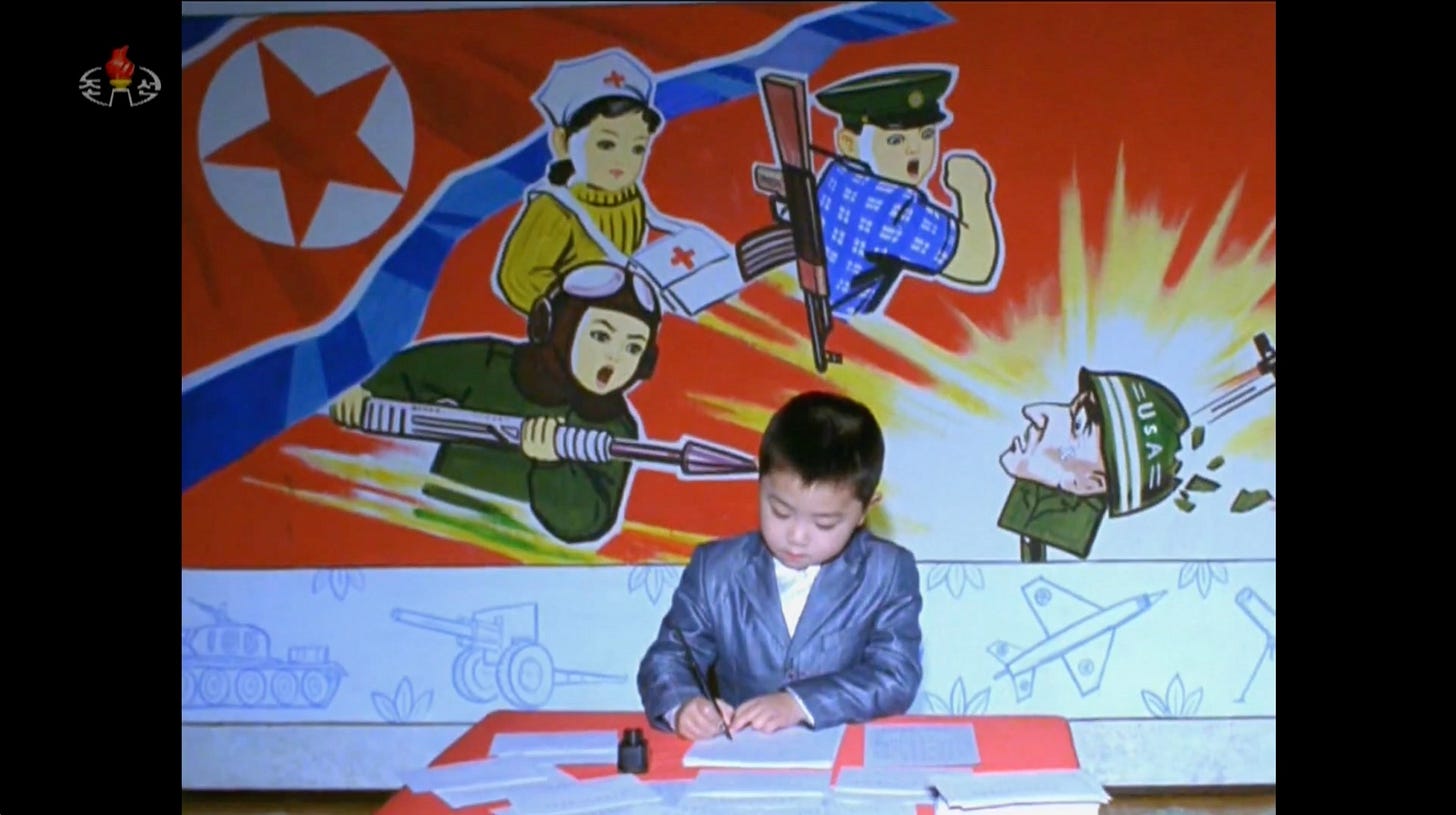
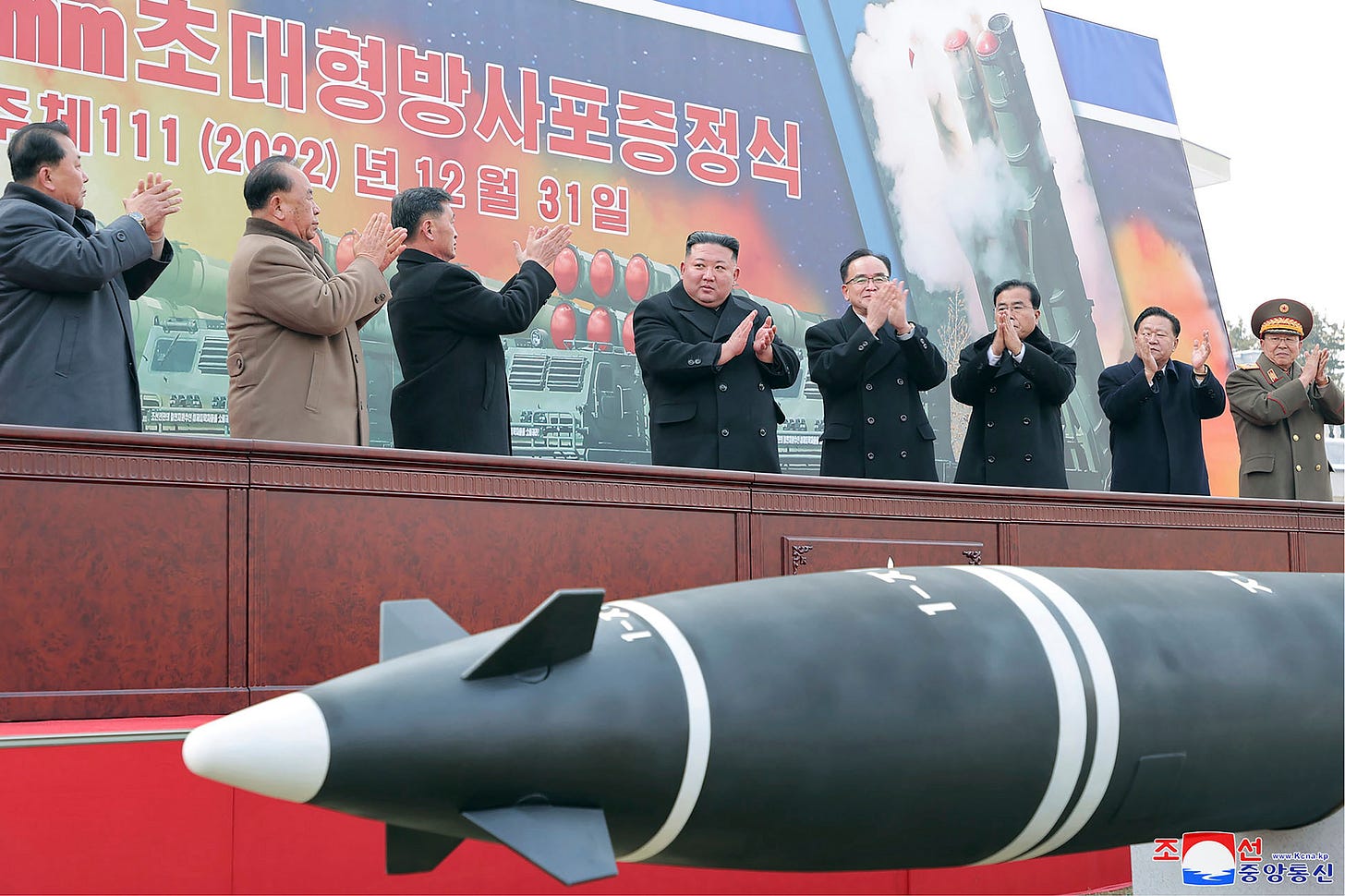
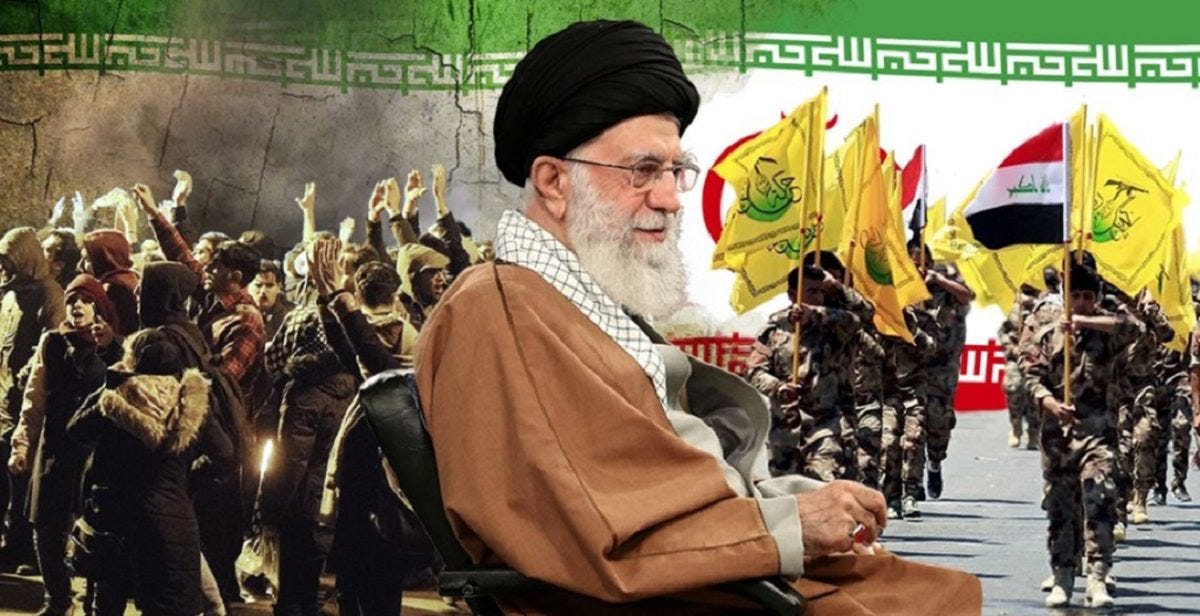
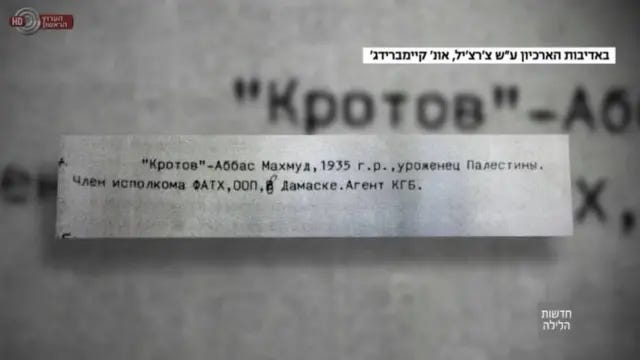


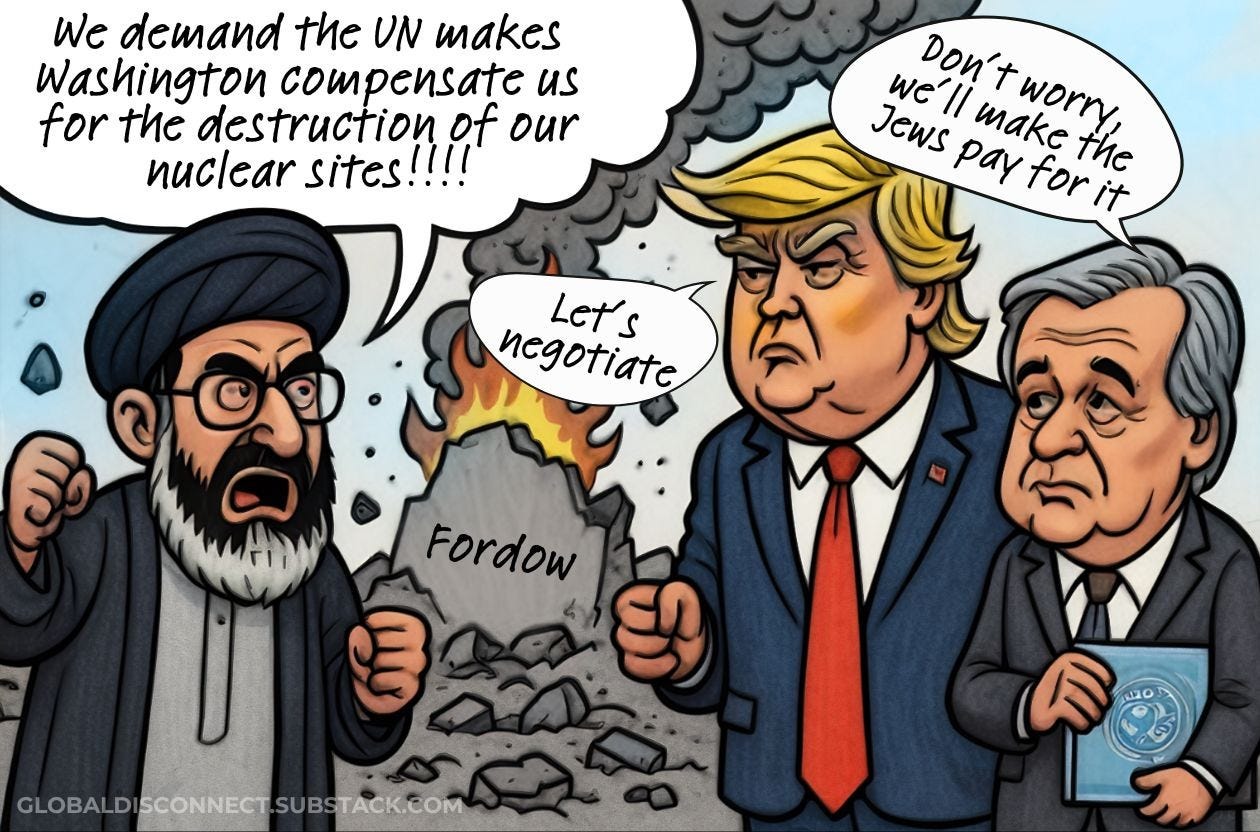

This is quite interesting. My own dad had fought in the Korean War but didn't talk about it much other than mentioning the Chinese were involved. Now it's become the playbook for Iran and its proxies.